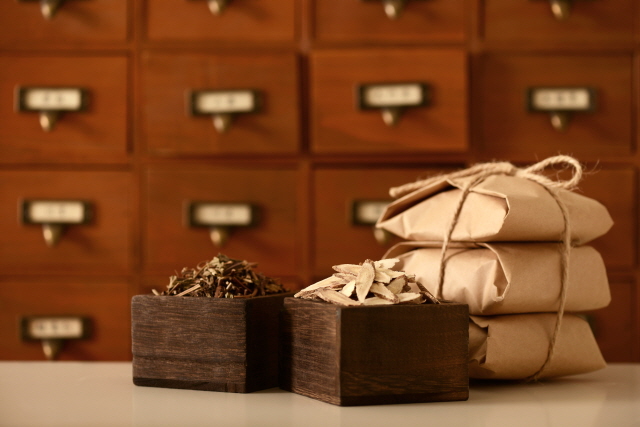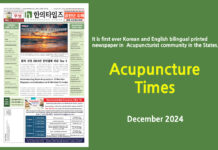
It Could Be Used To Treat Jaundice, Skin Rash, Pruritus, Inflammation And Tic.
By Ju Bong Kang, KMD
* Ingredients: Inchenhao(bitter, slightly cold) 12g, Zhizi(bitter, cold) 9g, Dahuang(bitter, cold) 4g
In-depth understanding: Actions and Diagnosis
Inchenhao-Tang is a prescription that clears heat and eliminates dampness and is a representative prescription for discharging dampness-heat stagnated in the stomach and intestines through urine and feces to relieve jaundice. However, even if jaundice symptoms do not appear, it improves skin rash, pruritus, stomatitis, eye pain and inflammation, neurological symptoms, tic symptoms, etc. These symptoms belong to the excess pattern rather than the deficiency pattern.
The function of promoting the release of bile from the gallbladder is called a cholesteric action, and Inchenhao-Tang enhances the cholesteric action. Chiharaoro(千原吳郞) of Tokyo University announced that the combination of the three drugs in Inchenhao-Tang had a synergistic effect on each other, resulting in an excellent cholesteric effect. In this process, this prescription, along with the cholesteric effect, releases dampness-heat and heat-toxin, which are stagnant in the stomach and intestines by the bitter and cold property and the pushing-purgative function of the constituent drugs; therefore, it relieves jaundice and other symptoms. In addition, Horukinguchi of Japan said in “Kambo do Kamboyaku” journal (「漢方と漢方薬」誌) that “Inchenhao-Tang is famous as a ‘jaundice treatment’ and is widely known to treat ‘catarrhal jaundice due to epidemic hepatitis,’ but it also has a good efficacy on a hive of eruption and itching especially due to food poisoning.”
I applied this prescription to a 43-year-old man who has not been able to be active in society for decades due to severe vocal tic symptoms. I had many cases of prescribing the formula for children with tic symptoms who usually tend to be constipated. His pulse was powerful, his abdomen was firm, and a signal-symptom of the feeling of fullness and oppression over the chest and hypochondria appeared a little. So, he took the decoction, which combined Inchenhao-Tang with Sini-San once daily for 10 months. Subsequently, his tic symptom was recovered by nearly 70%; the prescription used then was Inchen 20g, Dahuang 8g, Zhizi 20g, Caihu, Zhishi, Shaoyao, and Gancao, respectively 6g.
Among the constituent drugs, Inchenhao becomes a monarch drug. It has the function of clearing away heat and eliminating dampness, so it improves jaundice, jaundice due to immoderate drinking, sore toxicity, and dermatitis rhus and is also good for atopic dermatitis and pruritus. Pharmacologically, Inchenhao has the following functions: choleric effect, antilipemic effect, coronary dilatatory and fibrinolytic effect, hypotensive effect, antimicrobial activity, antimicrobial and antimicrobial effects, and antimicrobial and antimicrobial effects. In addition, clinicians sometimes use it instead of Caihu, depending on purging fire and controlling the liver, which is the effect of Inchenhao. Therefore, when the pulse is powerful, and constipation tends to occur for tic symptoms that no longer work when the Caihu prescription, Yigan-San, is used, I often get the effect with Inchenhao-Tang, as in the previous clinical case.
Zhizi becomes a minister drug clearing away heat and promoting diuresis, cooling blood and removing toxic materials, so to improve jaundice, dark-colored urine, ‘red and swollen and sour eyes’; and it improves acute jaundice hepatitis, gallbladder inflammation, nephrophyelitis, and urethral inflammation due to the dampness-heat of the liver and gallbladder.
Dahuang is an adjuvant drug treating jaundice from dampness-heat, murky urination, and red, swollen and sore eyes by dispelling virulent heat-evil and removing accumulation in the stomach and intestines.
The characteristics of this prescription in the diagnosis are yellowish on the eyelid, face, and tongue. This prescription is used for cases where the abdomen is not weak, and the pulse is usually sunken and powerful. If the abdomen is weak, the pulse is not powerful, and there is no tendency for constipation, it is necessary to use this prescription to remove Dahuang or consider Inchen-Wuling-San for jaundice symptoms.
Contents of the Source Text
Fever and perspiration due to Yangming-disease is the overflow of heat out of the body. Suppose a patient sweat only around one’s head and neck, and the body does not sweat. In that case, the urine volume decreases, and the patient wants to drink water with thirst because of the body’s heat-stasis. Jaundice always occurs, and Inchenhao-Tang rules it.
Application
It is used for jaundice, pruritic rashes, facial dermatitis, oral inflammation, periodontal inflammation, insomnia, and neurological symptoms in patients who tend to be constipated without weak abdomen and is often effective for tic symptoms of children who like meat and have a constipated tendency.
Differentiation
Inchen-Wuling-San: If the abdomen is soft and weak, the amount of urine or the number of urine decreases, and jaundice appears, use Inchen-Wuling-San; if the abdomen is not weak, use Inchenhao-Tang.































